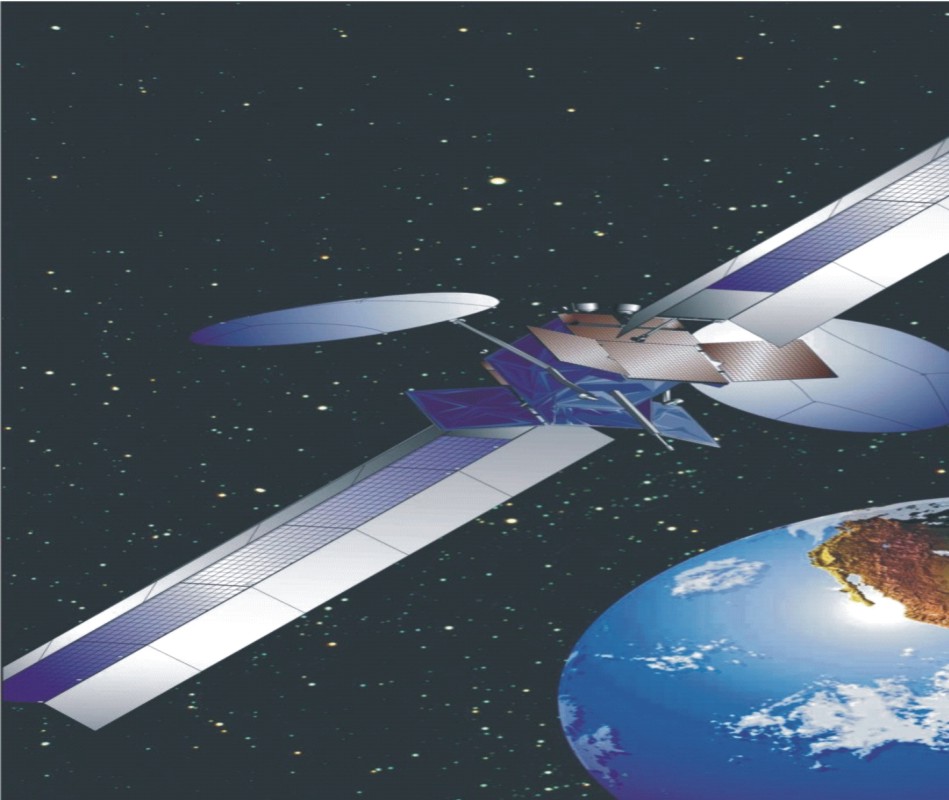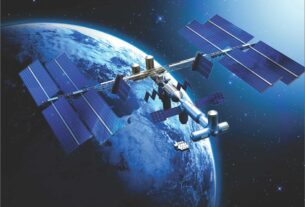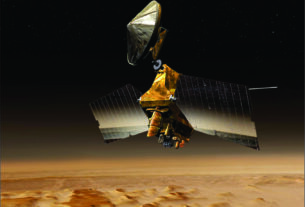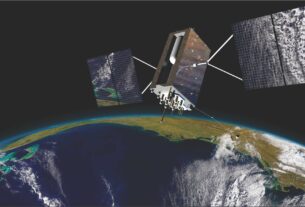Outer space is slowly but surely emerging as a new battlefield where future wars could begin and end.
Indeed, the possibility of space becoming altogether a new battle zone became evident in the hunter killer satellite tests that the erstwhile Soviet Union had carried out in 1960s with a high degree of success.
And not surprisingly, US did not take much time to overdo Soviets in the weaponization of the final frontiers. And in the bizarre race to outdo each other, both the super powers started experimenting with lethal devices such as laser beams and particle beams for deployment in outer space as satellite killer devices.
But the entire dynamics of the preparations for space war went into a kind of thaw after the collapse of Soviet Union in early 1990s.
Of course, both the US and Russia, the decimated avatar of once the mighty communist empire, have now made it clear that depending upon the situation, they are fully well prepared to exploit outer space in quest of their long term strategic goals.
For long, the sprawling and most populous Asian continent was nowhere in the reckoning in so far as the ground work for the space war was concerned. But such a complacent picture underwent a radical and shocking change with the militarily resurgent and economically buoyant Communist China unveiling a plan for its anti satellite test.
And much to the dismay of the world, in early 2007, China successfully destroyed its aging weather watch satellite positioned in an intermediate earth orbit by deploying a ground based medium range missile.
This brazen test that reduced the target satellite into smithereens was a clear demonstration by China of its long term strategy of matching the American advances in the area of space war.
Strangely enough, after this test, which added thousands of pieces of debris to the space junk in near earth orbit, China along with Russia highlighted the need for a treaty to ban the weaponization of outer space and keep outer space as an area of peace.
China’s space plan
China has left none in doubt that it is vigorously pursuing the development of beam weapons based on laser devices which can serve as an anti satellite device while acting as a substitute for the missiles.
Against this backdrop, strategic analysts are veering round the view that China’s rapidly expanding space program has the potential to alter the security dynamics in much of Asia and adversely affect the US defence forces untrammelled hold on the region.
As such American defence experts are envisioning the possibility of US suffering a crippling surprise attack in what could be a veritable ‘Space Pearl Harbour’. In this context, American space policy strongly advocates US freedom of action in outer space by denying the adversary the access to space.
China’s plan for an orbiting space station, which has accrued strength from the successful accomplishment of docking experiments could prove a valuable asset for China in the event of a space war.
For, such an orbiting complex in space could serve as a strategic platform for China to buttress it space war efforts.
China, which is already into the task of building a missile defence shield, is known to have strengthened its anti satellite capability by carrying out an orbital rendezvous manoeuvre in 2010 with the help of two satellites-SJ-06F and SJ-12. And as things stand now, China is more than keen to emerge as a global front runner in the emerging area of space war.
Of course, India’s defence establishment has been expressing concern, on and off, over the possible threat to Indian space assets from the developments in a neighbouring country.
While addressing the United Commanders Conference in New Delhi in mid-2008, Defence Minister A K Antony did not mince the words while highlighting India’s genuine grievance over the emergence of anti satellite weapons, a new class of heavy lift off boosters and improved array of military space devices in our neighbourhood.
Clearly, Antony was underscoring the Chinese threat to Indian space assets in the context of the growing clamour to set up an Indian aerospace command. Antony also wondered as to how long India would remain committed to the policy of non weaponization of space even as counter space systems are emerging in our neighbourhood.
Against such a scenario, Defence Research and Development Organisation (DRDO) has been hinting at the need for building up an Indian space defence capability to protect Indian space assets from the hostile and rogue satellites.
Options for India
For instance, Avinash Chander, Chief Controller (research and development) of DRDO’s missile systems ,has projected a proposal to put in place a constellation of small satellites-in the weight range of 30-60kg-with warheads that can be activated from the ground in case of an enemy attack.
“Currently, our satellites are not protected. The only way to counter an enemy attack on our satellites is shooting down his satellite,” observed Chander.
And with a view to prepare India for a space war of the future with confidence, V K Saraswat, Chief of DRDO has hinted at the need for India to build killer satellite devices, laser beams and a range of military satellites to support the Indian defence forces in the battlefield.
Ignoring the threat of space war from across the border would mean a certain repetition of the 1962 humiliating debacle.
Saraswat is right in his observation that ensuring the safety of space based assets is critical for the effective use of ballistic missile systems and high precision military devices.
Satellites, said Saraswat, have also become crucial for the Indian defence forces to strengthen their network centric warfare capabilities, surveillance, intelligence and reconnaissance operations.
As such, Saraswat noted that DRDO would keep the building blocks of an anti satellite system ready to help the country face the eventuality of a space war. The advances that ISRO has registered in the area of satellite technology along with the prowess that DRDO has built up in developing highly precise missile systems could be exploited to build a credible Indian anti satellite system.
In particular, DRDO has initiated work on developing a tactical laser weapon over the next five year. The focus of the frontier area of research for developing a laser beam weapon would be Laser Science and Technology Centre of DRDO.
And if all goes well, DRDO would put in place a laser system based on solid state device that would be capable of generating a power of 25 kw to shoot down a missile during its terminal phase at a distance of 5-7km.
Indeed, developing a laser system of this magnitude poses a serious challenge since at this point of time country has a wherewithal to produce a laser beam capable of generating just a few couple of kilo watts of power.
The perfection of beam control technology holds the key to the successful deployment of laser weapon. It would be in the fitness of things for DRDO to develop this laser weapon as a national endeavour with the involvement of country’s space and atomic research agencies, aerospace research laboratories and seats of academic excellence such as Indian Institute of Technology (IIT) and Indian Institute of Science (IISc).
But the biggest challenge in so far as preparing India for a space war is how to involve Indian Space Research Organisation (ISRO) in the efforts to build the various components of a credible space weaponization program.
For being a civilian space agency committed to the “peaceful uses of outer space”, ISRO cannot openly associate itself with a national endeavour focussing on space war.
Moreover, the involvement of ISRO in an exercise that is patently militaristic could easily attract international censure. As it is, ISRO had already come under US trade sanctions and technology embargo on more than one occasion for its alleged role in the proliferation of the so called dual use technology.
In fact, in the late 1990s, the US had exerted pressure on India to drop its Agni ballistic missile development program which was part of India’s Integrated Guided Missile Development Program (IGMDP) spearheaded by DRDO.
At that point of time, US had alleged that the solid fuel technology developed for India’s first civilian space vehicle SV-3 was exploited for the development of Agni series of missiles.
Taking into account these ground realities, the Government of India should display vision and guts to bring about a policy change aimed at facilitating ISRO’s involvement in defence related activities. China was able to make tremendous strides both in space exploration and defence production by building upon the synergy of its defence and space establishments.
One major stumbling block in preparing India for a space war is the very limited infrastructure of ISRO which boasts of only one launch pad at Sriharikota Island on India’s eastern coast.
Currently, it is not possible for ISRO to realize more than 3-4 launches a year. Moreover, ISRO boasts of a single operational launch vehicle in the form of the four stage space workhorse PSLV (Polar Satellite Launch Vehicle).
Exploring potentials
ISRO is still struggling to qualify the home-grown cryogenic engine stage which constitutes the building block of the high performance three stages GSLV. A single launch vehicle and a single launch pad scenario cannot make India a “super space power”.
As such, the best way out would be to involve Indian industries in a big way in building satellites and launch vehicles with a short turn round period.
From being a supplier of components and systems, the Indian industries should be encouraged to spruce up their act for playing the role of full system integrators.
Perhaps, it would be in the fitness of things for India to join hands with Israel, which in recent years has forged a strong relationships with India in the area of defence, homeland security and space technology, to giving a boost to the space war efforts from ground zero.
Indeed, by looking at the potentials and shortcomings that both the countries face in certain critical areas, an Indo-Israeli alliance would be a win-win combination in giving a shape to the contours of space weaponization.
While Israel’s strength lies in the areas of micro electronics, radars, precision guidance devices and a strong industrial base in the form of Israel Aerospace Industries (IAI), India’s plus point lies in the area of launch vehicles, propulsion, and a well equipped launch complex.
Whereas India has a well organised space programme with a clear cut objectives, Israel had for long lacked a comprehensive space strategy.
Moreover, Israel has not been able to build a sound launch base for heavier class satellites. Israel was nudged to make use of the services of Indian PSLV for getting its TECSAR reconnaissance satellite featuring a microwave earth observation system off the ground in January 2008.
The technical flaws that had affected its Shavit rocket had compelled Israel to enter into an agreement with the Bangalore based Antrix Corp, the commercial arm of Indian space program, for TECSAR launch support on commercial terms.
Indeed, the Indo-Israeli handshake in space is considered to be a logical extension of its growing strategic and military ties. The microwave imaging capability of TECSAR centres round its Synthetic Aperture Radar (SAR), the technology of which is in possession of handful of countries in the world.
As a quid pro quo for getting the TECSAR off the ground from the Indian soil, IAI helped ISRO build India’s first all weather, microwave earth imaging satellite RISAT-II. The launch of 300-kg RISAT-II featuring an X-band SAR by means of PSLV in April 2009 has given a new edge to the surveillance operations of the Indian defence forces.
In fact, RISAT-II was built and launched on a fast track mode to meet the challenges posed by the growing terrorist threat to the country and heighten vigil along the Indo-Pakistan border.
Clearly, ISRO was facing problems in so far as developing a home-grown microwave imaging system was concerned. Meanwhile, India’s full fledged microwave imaging satellite RISAT-1 carrying a C-band SAR is slated for launch by means of PSLV in April this year.
Coming to the defence front, India has already acquired defence hardware worth around US$1-billion from Israel. They include three AWACS (Advanced Warning and Control System) for the Indian Air Force (IAF) and high performance radars for India’s two layered missile defence shield being put in place by DRDO.
Indo-Israeli alliance
In addition, IAI is assisting DRDO to build long range surface air missiles with precision guidance for use of the Indian Navy and IAF.
Meanwhile, DRDO is looking at acquiring the missile seeker technology from IAI to enhance the precision and accuracy of Indian missile systems. Not surprisingly then Israel is aiming to outpace Russia as the largest defence partner of India.
Significantly, Israel’s geographical location-surrounded by a number of hostile Arab neighbours-limits its access to airspace with the result that it is forced to carry out launch missions westwards against earth’s eastward spin.
This reduces the efficiency of the rocket deployed for launching satellites. On the other hand the location of Satish Dhawan Space Centre (SDSC), the Indian space port located 90-kms north of Chennai in Sriharikota Island helps it take advantage of earth’s eastward spin.
Meanwhile, ISRO is scouting locations for setting up a second Indian launch pad. While India has launched more than sixty satellites for a variety of end uses, Israel has launched 14 civil and military satellites of which eleven are still in service.
While India can provide launch support for heavier class Israeli satellites, Israel can help India with advanced precision, guidance and radar systems for use in both space and defence sectors.
Indeed, industries under the umbrella of IAI have built up reputation for realizing high precision satellites for a variety of applications. And Indian industries are slowly evolving in terms of providing support in critical areas of space exploration involving satellites and launch vehicles.
Because both Israel and India have been a target of terrorist attacks and both the countries boast of a vibrant high tech industrial base, an Indo-Israeli alliance for preparing the ground work for space war would be an ideal option for both the countries.
By wedding India’s advances in launch vehicles and launch support systems with Israel’s strides in precision systems, micro electronics and guidance and navigation, both the countries could realize a common pool of resources meant to support space war.
But while Israel is not likely to be averse to such a proposal, the political environment in India ruled by a weak kneed and directionless United Progressive Alliance (UPA) government would imply that the country will have difficulties veering round this proposal.
Even so a beginning could be made by sounding Israel on the need for combined efforts for space war which needs enormous resources, a huge pool of human expertise, massive infrastructure and a vibrant industrial base backed by a strong political leadership.
While Israel have all these attributes, India seems to be lacking in sagacious and forward looking ruling dispensation.
India should realize that war in space, from being a star war scenario depicted in comics, is slowly becoming a chilling reality.
And the country which has built a credible record in space exploration should not fight shy of giving a militaristic dimension to its space program.
In this task, Israel cannot but be an ideal partner in India’s quest for meeting the challenges of a possible space war in the future. Though Japan has made impressive strides in building satellites and heavy lift off boosters, it cannot enter the arena of space war without drastically rewriting its constitution.





